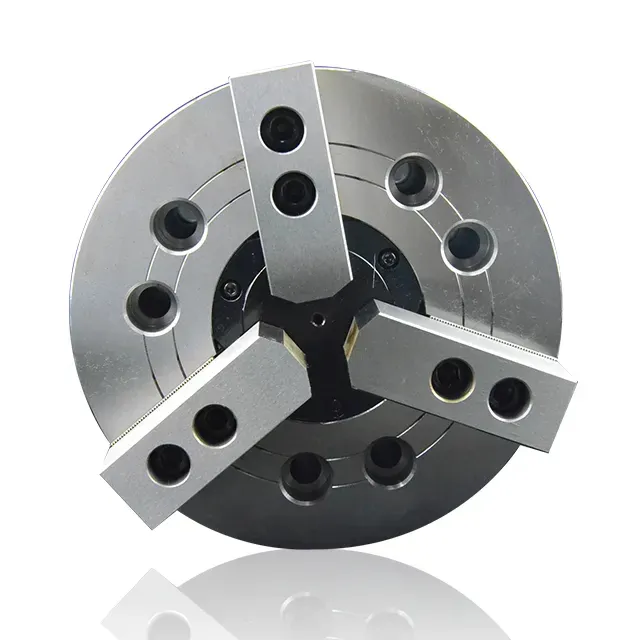The chuck is a clamping device that holds the workpiece on a lathe. Common chucks in workshops include three-jaw chucks, four-jaw chucks and six-jaw chucks.
Chuck is the clamping device for holding work in the lathe. Three-jaw chuck, four-jaw chuck and six-jaw chuck can be found in the machine shop.
If the workpiece is relatively short compared to its diameter, we can safely turn it in the three-jaw chuck without supporting the free end of the work.
In lathe work, work-pieces are held either between centers or in a chuck. Sometimes the work-pieces are held in a chuck at one end and supported by a center at the other.
Several types of chucks are available in machining. The three-jaw universal and four-jaw independent types are most commonly used in lathe work. They are designed to hold and revolve the work-pieces.
The three-jaw universal chuck is used to hold cylindrical work. The chucking is done quickly,as the three jaws move in and out together and automatically center the work. This type of chuck is accurate when new. It loses its accuracy as the jaws become worn.
is done quickly,as the three jaws move in and out together and automatically center the work. This type of chuck is accurate when new. It loses its accuracy as the jaws become worn.
To hold work-pieces of irregular shapes, we often use a four-jaw chuck instead of a three-jaw chuck. Its accuracy is not affected by wear, because each jaw can be adjusted independently.The jaws do not move simultaneously.



Features
- Jaws:
- The chuck has jaws that move simultaneously when the chuck is tightened or loosened, allowing for quick and precise centering of round or hexagonal workpieces.
- Self-Centering:
- The design ensures that the workpiece is automatically centered when the jaws are closed, which enhances accuracy.
- Construction:
- Typically made from high-strength steel or cast iron to withstand the forces generated during machining.
- Mounting:
- Can be mounted on a spindle with various sizes and thread types, making it versatile for different lathes.

Benefits
- Ease of Use:
- Fast setup and adjustment, making it ideal for repetitive tasks.
- Versatility:
- Suitable for a wide range of workpiece sizes and shapes, especially round ones.
- Stability:
- Provides a strong grip on the workpiece, reducing vibration and improving machining precision.
Applications
- Metalworking: Used extensively in turning operations for metals.
- Woodworking: Can be used for holding wood pieces in a lathe.
- Manufacturing: Common in production settings for efficient machining of parts.
Maintenance Tips
- Regular Cleaning: Keep the chuck free of chips and debris to maintain precision.
- Lubrication: Apply appropriate lubricants to the moving parts to ensure smooth operation.
- Inspection: Periodically check for wear or damage to the jaws and other components.
Types
- Standard Jaw Chuck: General-purpose chuck for various machining tasks.
- Scroll Chuck: Features a scroll mechanism for tightening the jaws uniformly.
- Adjustable Jaw Chuck: Allows for holding irregularly shaped workpieces by adjusting the jaws independently.


